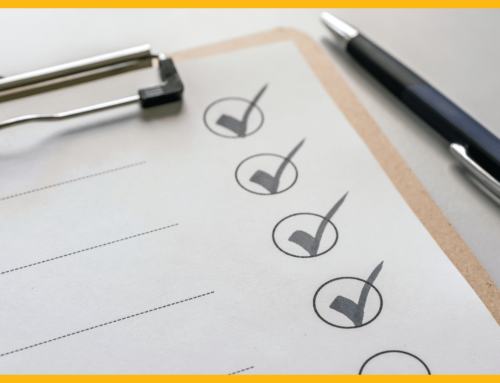A recurrent theme of my coaching this week (in fact, most weeks) is how to work efficiently. Many of my clients are go-getting employees or ambitious entrepreneurs and all are super busy. And often super stressed. And if I’m honest, not operating super efficiently or effectively (mainly because of this stress).
Instead, they’re firefighting, juggling, and dealing with whatever’s shouting the loudest. They’re being pulled in many different directions and feeling overwhelmed. And they’re starting to become frazzled and scattered (oh and I’ve been so guilty of this too – no saint here 😇!)
And sadly, the ramifications of this are huge:
⚡️ If we’re like this at work, we’re likely to be doing the same at home (or desperately self-medicating ourselves) and life’s losing its shine
⚡️ It’s a vicious stress cycle so just gets worse. The more stressed we get, the more we lose the ability to prioritise and to focus. Essentially we get less done in more time – and it can be the wrong stuff! And then we doubt ourselves and our abilities, piling on even more of the stress.
⚡️ This self doubt and stress can fuel imposter syndrome and perfectionism, so we don’t delegate or ask for help, and struggle to say say no (so the to-do list gets even longer)
⚡️ And finally – and to me, this is the biggie – being a “hamster on a wheel” means that we don’t get chance to look up and tune into the big picture. Super important for working efficiently but also important for ourselves. It means we get caught in operations, delivery and small tasks, and become the problem sorter. Whilst the confident, the calm and yes, sadly the unworthy arrogant take the credit and take their/your place (as the expert in your field; at the boardroom table; at the top of Google; at the next promotion).
If you’re struggling with this right now, here’s some super simple techniques to keep calm, keep focused, and keep working on what needs attention the most. And, don’t forget, this is really useful for personal life demands too.
5 Simple Steps to Work Efficiently
1. Take charge of the stress
Take time to tune into what’s happening with your nervous system at regular intervals (a chilled alarm sound can help remind you without adding to the stress). Bring focus to what’s going on in your body. How’s your breathing? Any tingles, pain or tightness? How present or conscious do you feel? If you’ve gone into a stress zone, you’ll be running a bit too fast (anxious, irritable, rapid breathing, tight chest, churning stomach are a few clues) or you’ll have dropped into apathy mode (zoned out, brain fog, fatigue, numbness, heaviness). And – not to complicate things – you can even have a bit of both. Think rabbit-in-the-headlights – panicked but paralysed (hello procrastination).
This is a massive topic in its own right but just starting to get to know your own nervous system – and its triggers and its soothers is the first step. So make regular check- ins and experiment with tiny soothing steps to bring yourself back to the moment, back to calm, back to you. You’ll find some ideas in my Mindful First Aid Kit and Using the Senses blogs.
And remember, everything in your body will be screaming at you not to do this. It will say you’re too busy, there’s no time! Or what’s the point, it’s all useless? Notice this, don’t argue with it (you’ll never win) but gently remind yourself that you’re going to listen to Em and try a new way instead!

2. Clear the decks
If your environment is cluttered, then I’m willing to bet your mind will be too. Look at your workspace with fresh eyes and see how you can make it work better for you (and include your online environment too – emails, folders, desktops, browser tabs). Think clean and clear.
Remove distractions as much as possible, particularly for those homeworkers out there. Distractions are the food of procrastination! Yes, it’s great to be able to put some washing in or unload the dishwasher. But this is eating into your work time, so make conscious choices about whether and when you do it, rather than automatically dashing when a machine beeps.
And this isn’t just about taking away. Add in things that inspire you, keep you calm, pep up your confidence – a houseplant, an aromatherapy candle, some music, an image that helps you to feel strong and capable. There’s always ways to access something, no matter where you work.
3. Work out your priorities (and defend them passionately)
Stress mode tends to mean short term, fire-fighting actions and of course, there will always be unexpected or urgent pressures needing attention. But if we only do this, then it’s really difficult to reach longer-term, bigger goals or manage to implement improvements that stop so much fire-fighting.
So we need to protect some time for the “bigger picture” and defend it passionately. There will ALWAYS be something that wants to take you away. Steps 1 and 2 will help you to pause, recalibrate and be more able to plan and prioritise consciously. Take time to envisage the medium and longer term – what will it deliver? How will it feel? Keep returning to that vision. And check out the Eisenhower Matrix too for task prioritisation and filtering.


4. Set realistic goals
An old boss of mine used to say “underpromise and overdeliver”, and much as it went over my head at 21, I get in now. So many of us set unrealistic goals. And it’s the curse of us perfectionists to underestimate the time things will take and what’s involved (as we always go above and beyond).
So again, come into that place of calm consciousness, and look at your Matrixed (slimmed down) to-do list with a new perspective. What’s realistic? What are the key markers to monitor progress? What are the manageable tasks you can break each goal down into?
5. Stay focused (beware the flit!)
To me, this is probably the biggest enemy of efficient working. We are constantly bombarded with distractions, all screaming “pick me”. The colleague asking a “quick” question, the boss setting a new target, the email pinging a new problem, phone calls, social media alerts, multiple browsers as we flit from one topic to the next. We are making our heads spin!
So we need to learn to carve out space to give our full focus to one task at a time. Create a schedule grouping similar tasks together so you can get in the zone. Be clear about your boundaries and when you are – and are not – available. Use simple techniques to help with this – get out of the office, block your diary, divert your phone, notifications off, put headphones on…
And a vital one. Notice when you are flitting from one task to the next because of “busy brain” (often a sign that you’re in stress mode). Pause, regulate and return to the task at hand to get it to a logical place to leave before moving on. Check out my Multitasking blog for more on this.

And that’s it for now. There’s so much more I could do with this – maybe one for another blog soon.
What are you efficiency tips? Are you going to give any of these a go? I’d love to know more, and hear how you managing to work with your nervous system. It’s not easy at first so reach out if it doesn’t come naturally.






